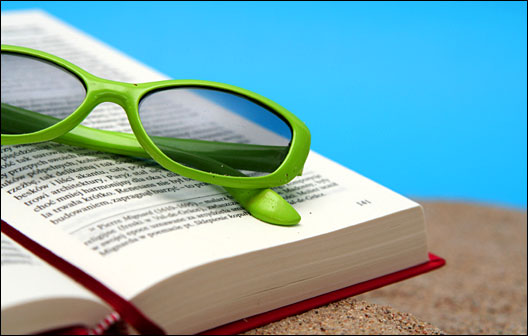
So maybe you’ll finally have a chance to catch up on some reading this summer. But so many of those books about the environment seem kind of … well, homework-y. What’s a vacationing enviro to do? Turn to Grist for advice, of course! Here are 15 recent page-turners just perfect for stuffing in your hemp beach tote.
Got sunny-day suggestions of your own? Let us know in the comments section below.
1.
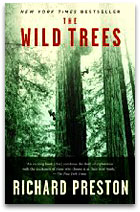
The Wild Trees: A Story of Passion and Daring
Richard Preston, Random House, 2007
Think nature writing is boring? The Wild Trees is about as boring as a car chase. Master storyteller Richard Preston follows a motley group of professional and amateur botanists into the canopies of the tallest trees in the world, where they explore a sky-high ecosystem almost entirely unknown to humans. A great tale of science and adventure — and a love story to boot.
2.
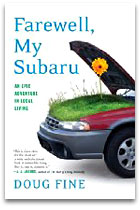
Farewell, My Subaru: An Epic Adventure in Local Living
Doug Fine, Villard, 2008
A breezy journal of Doug Fine’s attempts to live a low-carbon life in rural New Mexico, despite his lack of gardening and electrical skills. After a year of wrestling with weather, goats, and tax assessors on the Funky Butte Ranch, Fine concludes that “… the greatest impact we can have on crafting a sustainable future is not just by buying ‘green products,’ but rather by actively understanding that every part of life can and should be infused with carbon reduction.”
3.
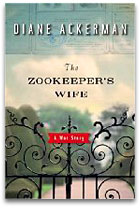
The Zookeeper’s Wife: A War Story
Diane Ackerman, W. W. Norton, 2007
During World War II, Antonina Zabinski, the wife of a Polish zookeeper, rescued Resistance fighters and Jews by hiding them in her Warsaw villa — and in the empty zoo cages surrounding it. In this real-life historical drama, Diane Ackerman shows how Antonina’s love for the animal world inspired heroism, even as Nazi romanticism about nature led to grossly different acts.
4.
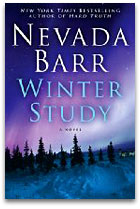
Winter Study
Nevada Barr, Putnam Adult, 2008
The 14th installment in Nevada Barr’s reliably entertaining National Park Service mystery series is one of her darkest and scariest yet. Winter Study takes our heroine, park ranger Anna Pigeon, to a wolf study at Isle Royale National Park in Lake Superior, where she contends with all sorts of mayhem, from interagency rivalry to bitter cold to a canine — or human — with murderous intent.
5.

World Made By Hand
James Kunstler, Atlantic Monthly, 2008
An absorbing and disturbing novel about the near future. After a constellation of plagues — war, disease, declining oil supplies, climate change — fracture U.S. society into isolated outposts, former insurance salesmen and software executives are forced to grow their own food, build their own houses, and defend their communities against violence and fanaticism. As dark as Kunstler’s world gets, hints of rural romanticism keep the reader guessing.
6.
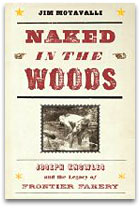
Naked in the Woods: Joseph Knowles and the Legacy of Frontier Fakery
Jim Motavalli, Da Capo, 2007
In the summer of 1913, a middle-aged man named Joseph Knowles stood before reporters, stripped down to his jock strap, and marched into the Maine wilderness, promising to live for two months with only his outdoor skills to support him. One of a long line of American “nature fakers,” Knowles was later exposed as at least a partial fraud. Motavalli traces his complicated, entertaining story, and delves into its larger cultural lessons.
7.
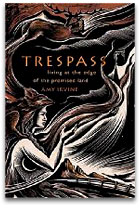
Trespass: Living on the Edge of the Promised Land
Amy Irvine, North Point Press, 2008
Amy Irvine, a sixth-generation Utahn, is both a descendant of one of the original Mormon saints and a passionate advocate of wilderness — a combination that often sets her at odds with her heritage, and with many of her neighbors in rural Utah. Her fine memoir weaves marriage, motherhood, and love of landscape into a story of rebellion and restoration.
8.
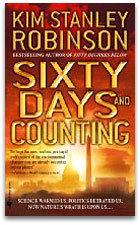
Sixty Days and Counting
Kim Stanley Robinson, Bantam, 2007
Travel to the uncomfortably near future with sci-fi writer Kim Stanley Robinson. In Sixty Days and Counting, the third in Robinson’s trilogy of climate-change novels, deep freezes kill drivers paused at traffic lights, the D.C. metro area is recovering from a major flood, and grocery-store shelves are frighteningly bare. Wrapped in political intrigue, the substantive science goes down easily.
9.
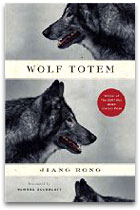
Wolf Totem
Jiang Rong, Penguin, 2008
A runaway best-seller when it was first published in China in 2004, Wolf Totem follows a young Chinese intellectual to the Mongolian steppes, where he raises a wolf cub and watches as the influx of Chinese bureaucracy changes Mongolian culture. Thick with political implications, Wolf Totem also offers some amazing descriptions of wolves on the hunt.
10.
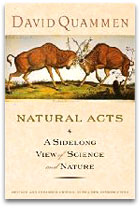
Natural Acts: A Sidelong View of Science and Nature (Revised and Expanded Edition)
David Quammen, W. W. Norton, 2008
First published in 1985, when David Quammen was, as he writes, “unencumbered by experience, professional qualifications, broad knowledge, or a sense of decorum,” the new edition of Natural Acts includes a selection of his columns from Outside magazine and more recent features from National Geographic and elsewhere. Whether he’s writing about mosquitoes, weeds, octopi, or sex, Quammen always manages to turn science into a literary treat.
11.
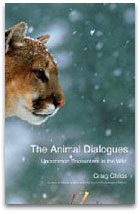
The Animal Dialogues: Uncommon Encounters in the Wild
Craig Childs, Little, Brown, 2007
Craig Childs can often be found in an obscure Southwestern desert canyon, scribbling madly in his notebook, miles from water and even farther from people. His spectacular encounters with animals — from porcupines to squid to mountain goats — are recounted in this graceful collection. Save the mountain lion chapter to read aloud around a summer campfire.
12.
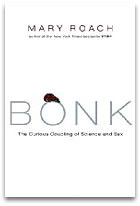
Bonk: The Curious Coupling of Science and Sex
Mary Roach, W. W. Norton, 2008
What’s summer reading without a few good dirty parts? Considering the planetary consequences of unchecked reproduction, human sexuality is a pretty fundamental environmental issue — some would say the fundamental issue. Science writer Mary Roach puts the steam in green with her hilarious tour of sex research, which includes all manner of odd characters and contraptions.
13.
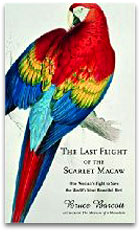
The Last Flight of the Scarlet Macaw: One Woman’s Fight to Save the World’s Most Beautiful Bird
Bruce Barcott, Random House, 2008
Environmental journalist Bruce Barcott follows the “Zoo Lady” of Belize as she battles a hydropower dam — and attempts to save her adopted country’s last nesting site for scarlet macaws. A larger-than-life character who once worked as a circus-tiger trainer, Sharon Matola faces her many foes with determination, a big mouth, and a passion for wildlife. Barcott’s insights into Belizean society, and environmental set-tos in general, round out an engaging story.
14.

Gaia Girls Way of Water
Lee Welles, Chelsea Green, 2007
Gaia Girls Way of Water, the second in the Gaia Girls series (the first is Enter the Earth, and Air Apparent is forthcoming) is an eco-adventure for the Harry Potter set. Appropriate for ages 9 and up — but plenty entertaining for adults — Way of Water sends its young heroine Miho to Japan, where she and a talking otter embark on a quest to save the sea.
15.
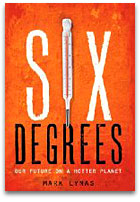
Six Degrees: Our Future on a Hotter Planet
Mark Lynas, National Geographic, 2007
Yeah, we know, you’ve already read too many climate-change books. But the problem isn’t going away, and Six Degrees is a readable forecast of the future. Lynas details the effects of a 1-degree rise in average temperature, a 2-degree rise, and so on, all the way up to 6 degrees Celsius — the upper limit of the IPCC predictions for the end of the century. So when your crotchety uncle tells you, at a summer barbecue, that he still doesn’t think 3 degrees is a big deal, you’ll be able to scare the sauce off his ribs.


